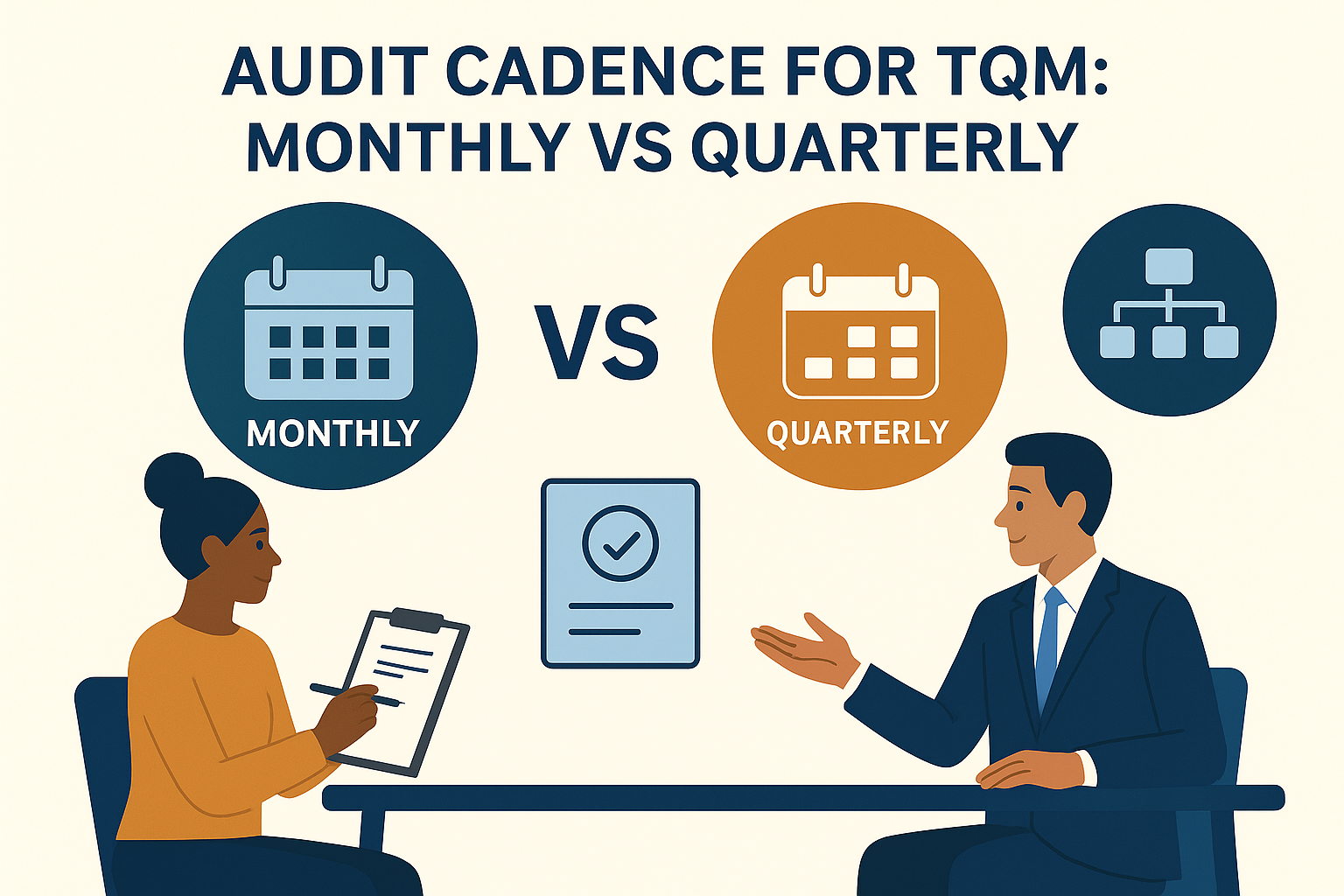- Home
- Continuous Improvement Certification Online
- Audit Cadence for Tqm
Audit cadence for TQM: monthly vs quarterly—what to review and repor
Choose cadence by purpose. Monthly TQM audits are for run-time control: check process conformance, CTQ defects, FPY/RTY, customer complaints, and CAPA status. Use brief gemba checks, layered process audits, and a one-page dashboard. Quarterly audits are for direction: review COPQ (cost of poor quality), capability (Cp/Cpk), customer NPS trends, risk, and cross‑functional themes; validate benefits and adjust priorities. Report monthly to line leaders (what drifted, fixes due next week); report quarterly to executives (portfolio status, benefits, risks, staffing). Keep scope stable: 10–15 checks per area monthly, 3–5 deep‑dive themes quarterly. Tie both cadences to a single corrective‑action log with clear owners and due dates so findings create change, not paperwork.

The right TQM audit cadence depends on the
decision you want to drive. Use monthly for operational control and quarterly
for strategic steering.
Monthly (run-time control): Focus on conformance and fast feedback. Use layered
process audits and short gemba checks to verify that standard work is followed,
CTQ (critical-to-quality) characteristics are measured, and controls work.
Review a one-page dashboard: CTQ defects, first-pass yield (FPY), rolled
throughput yield (RTY), customer complaints/escapes, and CAPA (corrective and
preventive action) status. Timebox to 60–90 minutes per area. Output: a
prioritized action list due by the next weekly meeting.
Quarterly (direction and learning): Step back to evaluate outcomes and
capability. Review COPQ (cost of poor quality), capability indices (Cp/Cpk) for
key processes, stability of control charts, customer NPS trends, audit escape
rates, and risk items. Conduct 3–5 deep dives on cross‑functional themes (e.g.,
supplier quality, changeover control, training effectiveness). Output:
validated benefits, reprioritized projects, and resourcing decisions.
Reporting: Monthly goes to area owners and line leaders—what drifted, which
fixes will close the gap next week. Quarterly goes to executives and process
owners—portfolio health, benefits, risks, and staffing. Keep a single
corrective‑action log with owners and due dates so monthly and quarterly
findings connect and compound.
Guardrails: Limit monthly to 10–15 checks per area to maintain energy; reserve
the quarterly for a few topics in depth. Use the same operational definitions
and data sources across both cadences so trends are real, not artifacts.
Back to Evaluation of TQM.
Suggested links:
Teamwork in TQM
How
to Evaluate a QMS
Advanced
Lean Training